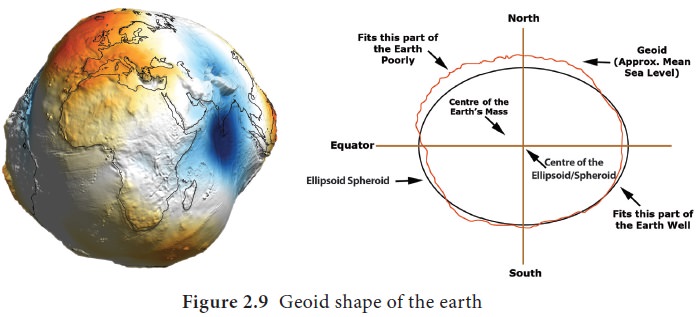Chapter: 11th Geography : Chapter 2 : The Solar system and the Earth
Shape and size of the Earth
Shape
and size of the Earth
It once was believed that the Earth was flat and
that ships could sail over the edge. This view persisted even in the middle
ages and was an issue in recruitment of Columbus.
Early Greek view was that the world was surrounded
by the ocean (Oceanus), origin of all
rivers. Anaximander (600 B.C) proposed that cylindrical earth was surrounded by
celestial sphere. Pythagoras (582-507 B.C.) believed that the Earth was a sphere,
which was considered the most harmonious geometric shape. Aristotle (384-322
B.C.) described observations that supported the theory that the Earth was a
sphere. These included the fact that the shadow of the moon is circular in
lunar eclipses and constellations were higher in the sky as one traveled south.

Eratosthenes (275-195 BCE) estimated size of earth from
observations that the elevation of the sun varied with position on the Earth’s
surface in Egypt. Observations of the following suggested that the Earth is a
sphere.
1.
Mountain
peaks lit by the Sun after sunset.
2.
Ships
disappear below the horizon as they sail across ocean.
3.
The
moon looks like a disc.
4.
The
Earth casts a circular shadow during lunar eclipses.
The Earth is an oblate spheroid, bulged at the
equator and flattened at the poles. It is called ‘Geoid’ (Figure 2.9) meaning
the earth is earth-shaped. The bulge at the equator is caused by the
centrifugal force of the Earth’s rotation. The gravitational pull of the earth
is the strongest at the flattened poles and it is weaker towards the equator.
HOTS
Chimborazo in Ecuador is higher than Mount Everest,
if measured from the centre of the Earth. Why?
The Sun’s gravitational pull differs in force at
the poles. The North Pole points in the same direction to the North Star when
it revolves about the Sun. If the Earth would not have been tilted on its axis,
the days and nights would have been of same duration always.
Related Topics